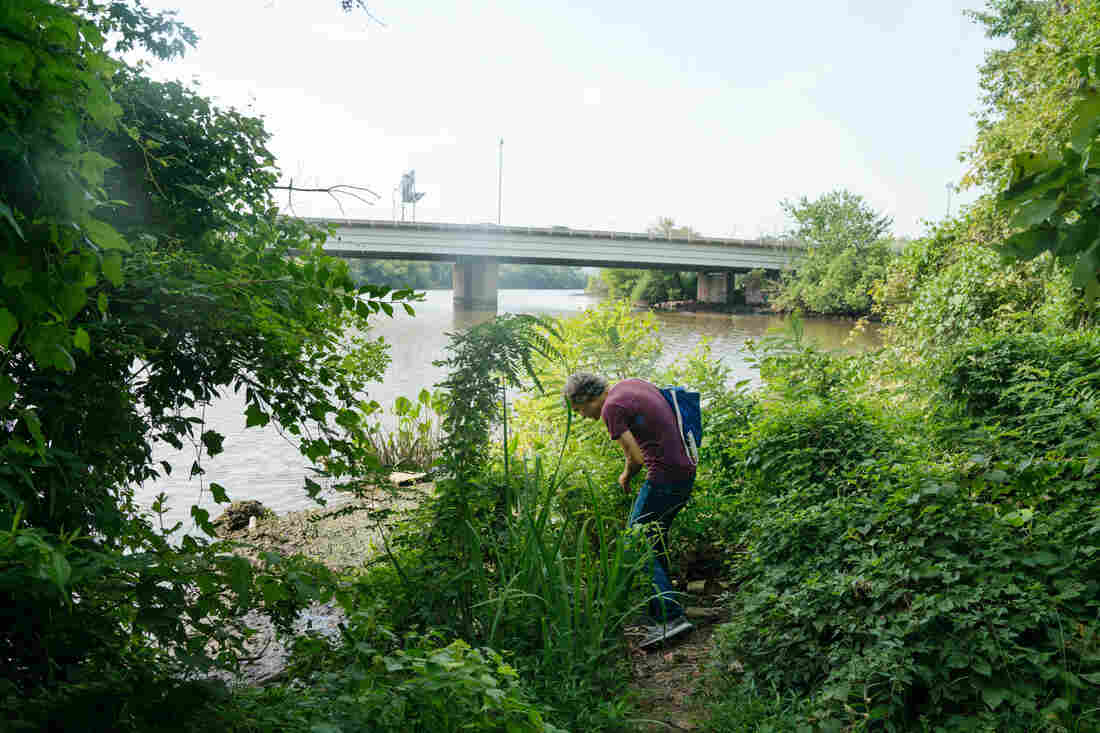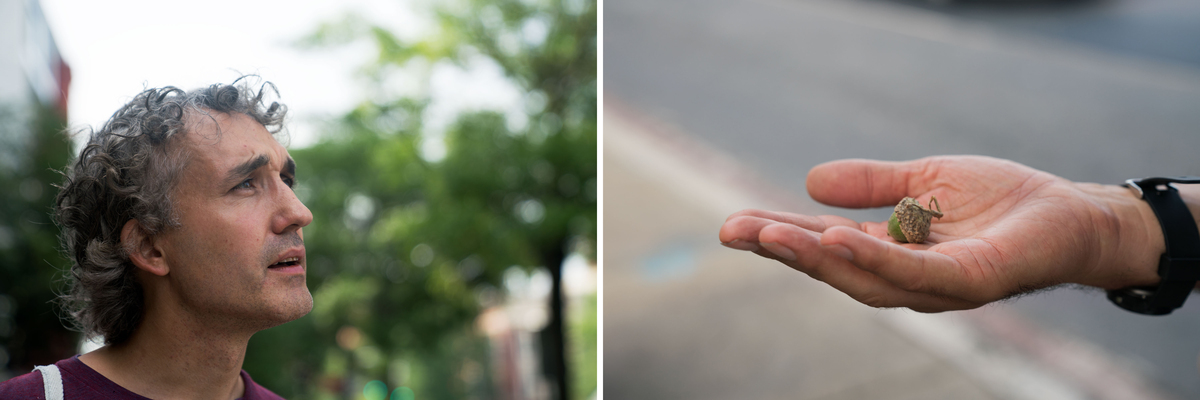 magnify this image
magnify this image
Jason Logan appears at the ground searching for ink-making resources on Heritage Island in Washington, D.C. Claire Harbage/NPR cover caption
toggle caption Claire Harbage/NPR
Jason Logan appears on the floor looking for ink-making substances on Heritage Island in Washington, D.C.
Claire Harbage/NPRJason Logan is always looking at the ground.
"What I care to do is barely walk definitely slowly," he says, eyes down. he is in a dusty, chain-hyperlink fence-lined alley in downtown Washington, D.C., with broken bottles and chunks of concrete scattered about. it's right off one of the metropolis's foremost streets, and the thrill of site visitors and wail of sirens fill the air.
"a part of what I do and a part of what i'm excited through is barely opening up americans's eyes to what's occurring at their toes," Logan says, scanning. "kind of throughout the lens of: might I make an ink out of that?"
beneath, lye water (crafted from the ashes of apple bushes with rain water filtered through it) is dripped on appropriate of ink made from wild grapes with vinegar and soda ash water (baking soda that has been "double-baked").

credit score: Claire Harbage/NPR
Logan was an illustrator for The long island instances and other publications. He now owns a enterprise known as The Toronto Ink company that sells "highway-harvested pigments" — ink crafted from the world around him. In his new book, Make Ink: A Forager's e-book to natural Inkmaking, Logan demystifies the technique, encouraging experimentation and taking a clean look at city environments.
that is what he's doing here, within the alley, staring at the ground, looking for ingredients. He facets out an okaytree on the different side of a fence and stoops to prefer up acorns. Chicory, morning glories and bright eco-friendly grass sprout regional.
Logan would not simply focal point on nature in his foraging; he also makes ink from the detritus of the metropolis. He stops all at once, picks up a rusty nail and puts it in his pocket. Rust, he says, can make yellow, red, orange or black.
"one of the vital first rocks that people used on cave art work and stuff had been iron oxides, which can be nearly rusts," Logan says.
other finds on this trip consist of brick dust, wild berries and cigarette butts. "Tobacco's truly an amazing dye and a extremely pleasing ingredient," he says.
 magnify this image
magnify this image Jason Logan, writer of Make Ink, holds an acorn that he present in Washington, D.C. Claire Harbage/NPR cover caption
toggle caption Claire Harbage/NPR
Jason Logan, creator of Make Ink, holds an acorn that he present in Washington, D.C.
Claire Harbage/NPR magnify this image
magnify this image (Left) An assortment of natural inks from the Toronto Ink enterprise. (correct) Black walnuts that have been picked by using Jason Logan in Washington, D.C., can be boiled all the way down to a wealthy brown ink, whereas a vibrant yellow ink can be made in a few minutes out of turmeric and vodka. Claire Harbage/NPR cover caption
toggle caption Claire Harbage/NPR
(Left) An assortment of herbal inks from the Toronto Ink business. (correct) Black walnuts that had been picked via Jason Logan in Washington, D.C., will also be boiled right down to a rich brown ink, whereas a shiny yellow ink can be made in a couple of minutes out of turmeric and vodka.
Claire Harbage/NPRLogan first began making ink after he had toddlers and became involved about the toxicity of lots of his artwork elements. His first effort, crafted from black walnut that was boiled for hours, produced a prosperous, darkish brown that layered to create a complex texture on the page.

"It was simply so a hit that I needed to hold going, and look for different issues that I might discover on the ground within the metropolis and make color out of," he remembers.
traditionally, ink is for mark-making, and may be good enough to seem to be the identical after years on a page. Logan's inks are distinctive — they are residing. They could alternate color, fade and even disappear completely over time. They react with acids, like vinegar, or basics, like soda ash, to form complicated, multi-colored works of paintings.
"there's a couple form of guidelines about good ink, and i regularly tend to smash all of them," he says. "I individually love the feeling of some thing it's each in my manage and out of my manage. ... I bet i am interested in sudden outcomes."
a kind of surprises for the layperson: Flower petals, no count how colorful, are complicated to make into decent inks. And one of the crucial challenging tones to provide, Logan says, is a vivid eco-friendly: despite the fact there is a number of chlorophyll in the flowers all around us, turning it right into a constructive ink is a puzzle he's nonetheless understanding.
Jason Logan uses gadgets as distinctive as rusty nails to vine ash to black walnuts to make his ink.

credit score: Claire Harbage/NPR






0 comentários:
Postar um comentário